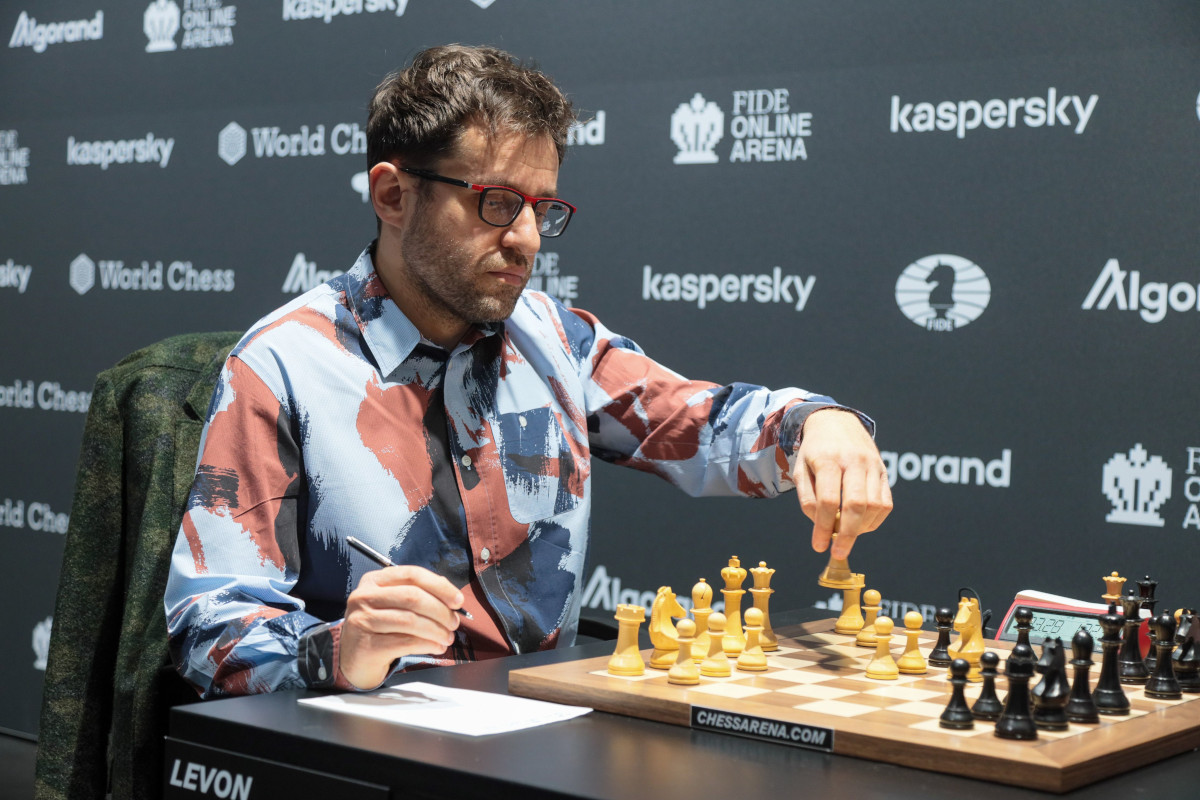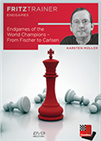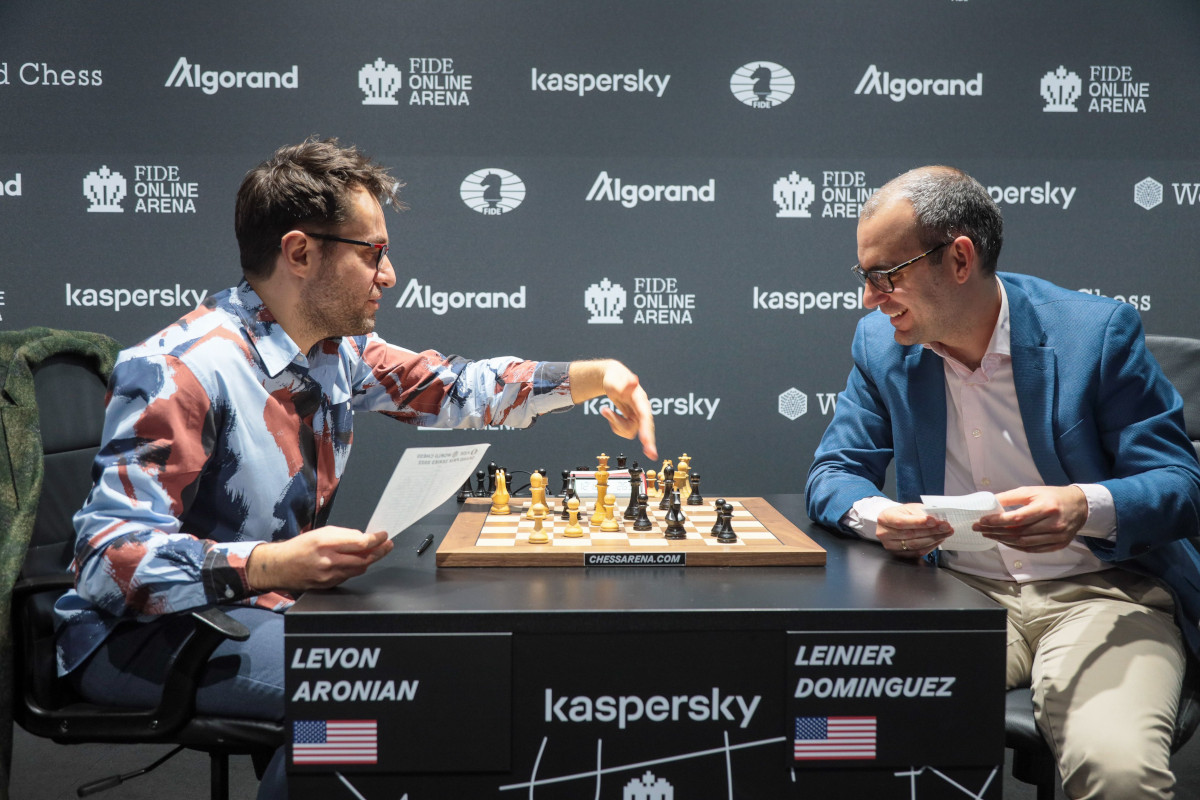Keeping it sharp
 Concerning excitement, the first leg of the Grand Prix series has been a massive success so far. Even at the outset of the knockout stage, when players might choose to relax and play it safe after a gruelling double round-robin, we got to enjoy two sharp games which both ended decisively.
Concerning excitement, the first leg of the Grand Prix series has been a massive success so far. Even at the outset of the knockout stage, when players might choose to relax and play it safe after a gruelling double round-robin, we got to enjoy two sharp games which both ended decisively.
Hikaru Nakamura and Levon Aronian, who rested on Friday as the only players who reached the semis without a playoff, continued to perform strongly and defeated Richard Rapport and Leinier Dominguez respectively.
Aronian’s performance has been particularly impressive, having so far scored four wins in seven games to gain 14.1 Elo points and climb to fourth place in the live ratings list. If he continues to perform at such a high level, he might soon surpass the 2800 rating barrier — the 39-year-old had an official rating above 2800 for the last time in December 2017.
Aronian 1 - 0 Dominguez
The two latest additions to the US national team quickly played 14 moves of theory out of a Queen’s Gambit Accepted. Dominguez, however, soon began to spend vast amounts of time, which would turn out to be a crucial factor later on.
Black had given up an exchange in the opening and left his king in the centre, which meant precise play was called for to claim enough compensation. Dominguez, despite being a strong calculator, faltered under pressure on move 21.
 He was a child prodigy and he is surrounded by legends. In his best times he was considered to be unbeatable and by many he was reckoned to be the greatest chess talent of all time: Jose Raul Capablanca, born 1888 in Havana.
He was a child prodigy and he is surrounded by legends. In his best times he was considered to be unbeatable and by many he was reckoned to be the greatest chess talent of all time: Jose Raul Capablanca, born 1888 in Havana.
Here 21...Qc7 or 21...Bb7, activating his pieces, was Black’s best alternatives, while Dominguez’s 21...Ne5 failed tactically to 22.Kh1 Nc6 23.b3, the move misevaluated by the Cuban, as he later told Michael Rahal.
The problem is that after 23...c3, which might look strong from afar, there is 24.Bxb5 Bd7 25.Rxe8+ Bxe8
All these lines needed to be calculated with anticipation, and here Aronian chose the imprecise 26.Be1, when the simplifying 26.Bxc6 was better. White still had the advantage, but Black still had centralized pieces to at least complicate matters.
Aronian allowed his opponent to get back into the game soon after, but Dominguez was the one making the last mistake.
Already in time trouble, Dominguez failed to find the one move that would have kept his chances alive: 31...f4. His 31...Ne3, on the other hand, allowed his opponent to go on the attack with 32.Qc8+ Kf7 33.Qd7+ Kg6
Now it is White who needs to find the one winning move, precisely the same one that his opponent had missed three moves ago: 34.f4. Unlike Dominguez, Aronian found the tactical shot, and demonstrated the winning line — 34...Qe6 (34...Qxf4 fails to 35.Qe8+ Kg5 36.Bxe3) 35.Qxe6+ Nxe6 36.Ne2
The endgame is winning for White. Aronian needed five more moves to force his opponent’s resignation.

Levon Aronian
Nakamura 1 - 0 Rapport
A double-edged middlegame position also appeared on the board in the other semifinal. Nakamura was in a fighting mood and went for complications on move 23.
23.Bxg6 wreaks havoc on Black’s kingside structure at once. The idea is that after 23...hxg6 24.Ngxe6 Black should not capture the knight with 24...fxe6 due to 25.Nxg6, when the connected passers on the kingside give White a clear edge.
 Let endgame expert Dr Karsten Müller show and explain the finesses of the world champions. Although they had different styles each and every one of them played the endgame exceptionally well, so take the opportunity to enjoy and learn from some of the best endgames in the history of chess.
Let endgame expert Dr Karsten Müller show and explain the finesses of the world champions. Although they had different styles each and every one of them played the endgame exceptionally well, so take the opportunity to enjoy and learn from some of the best endgames in the history of chess.
Rapport saw this far and correctly opted for 23...Nb3 in the first diagrammed position. After thinking for 13 minutes, Nakamura decided to give up an exchange with 24.Nfxe6 fxe6 25.Nxh7 Rfg8 26.Bd3
Through a different path, White got the connected passers on the g and f-files, except that in this line — after 26...Nxc1 27.Kxc1 — he is an exchange down instead of having a rook for two knights (as in the aforementioned variation).
Engines consider this position to be close to equal, but it is Black who needs to defend precisely to keep the balance. In the game, Rapport quickly gave back the exchange, fearing his opponent’s active alternatives. By doing so, though, he entered an inferior endgame.
Nakamura was clearly in the driver’s seat but needed to work hard to convert his advantage into a win.
White is winning here, but with those black passers on the queenside, Nakamura was forced to calculate specific lines which would secure him the full point. The American did just that, as he saw his opponent throw in the towel on move 72.

Hikaru Nakamura and Richard Rapport
Links


















 Concerning excitement, the first leg of the Grand Prix series has been a massive success so far. Even at the outset of the knockout stage, when players might choose to relax and play it safe after a gruelling double round-robin, we got to enjoy two sharp games which both ended decisively.
Concerning excitement, the first leg of the Grand Prix series has been a massive success so far. Even at the outset of the knockout stage, when players might choose to relax and play it safe after a gruelling double round-robin, we got to enjoy two sharp games which both ended decisively.






